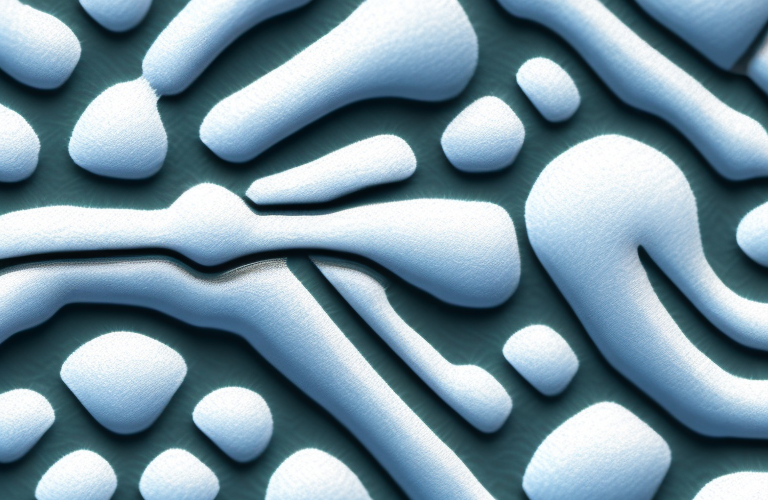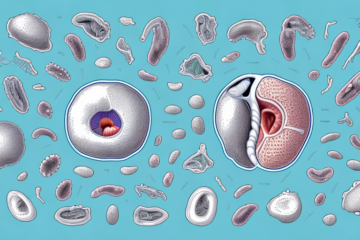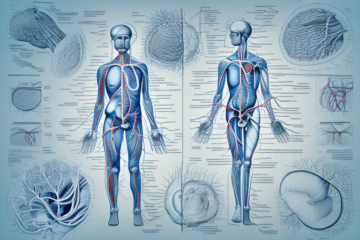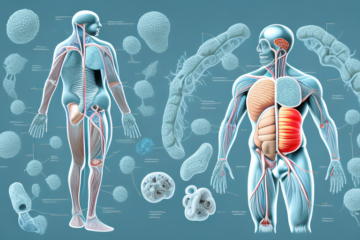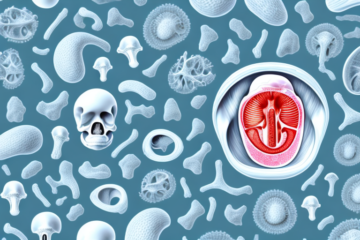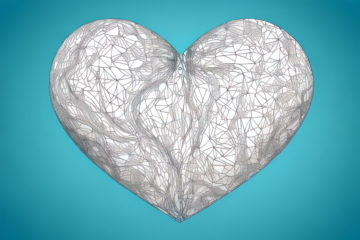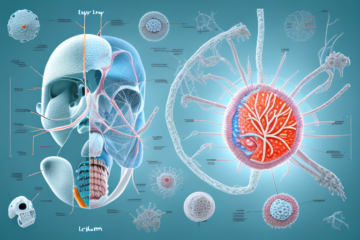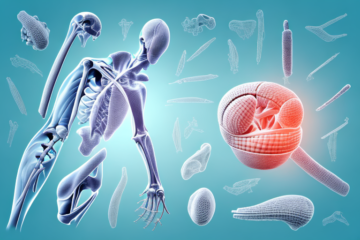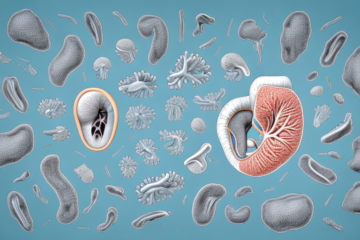Have you ever stopped to wonder why we even have nails? These small but crucial parts of our body may seem insignificant, but they play an important role in our everyday lives. From providing protection to enabling fine motor skills, nails are more than just a fashion accessory. Let’s explore the different aspects of nails, from anatomy to common problems to care and beyond.
The Anatomy of a Nail: Understanding the Different Parts
Nails are made up of several parts, each with a specific function. The nail plate, which is the hard, visible part, is made up of keratin, a tough protein. The nail bed is underneath the plate and is rich in blood vessels and nerves. The matrix, located at the base of the nail, is responsible for producing new nail cells. The cuticle, or the layer of skin at the base of the nail, acts as a barrier to protect the matrix from infection.
In addition to these parts, nails also have a lunula, which is the half-moon shaped area at the base of the nail. This area is actually the visible part of the matrix and is responsible for producing the majority of the nail plate. The lunula can provide important information about a person’s health, as changes in its appearance can indicate certain medical conditions.
Furthermore, nails can also reveal a lot about a person’s lifestyle and habits. For example, brittle nails may be a sign of a poor diet or vitamin deficiency, while yellowing or thickening of the nails can be a sign of a fungal infection. Regularly trimming and filing nails can help prevent these issues and promote overall nail health.
The Function of Nails: More Than Just Aesthetics
Aside from providing an aesthetic appeal, nails have many important functions. For starters, they protect our fingertips from injury and damage. They also enhance our sense of touch, allowing us to pick up small items or feel the texture of surfaces. Moreover, nails allow us to perform fine motor skills, such as typing or playing a musical instrument.
In addition to these functions, nails can also provide important clues about our overall health. Changes in nail color, texture, or shape can indicate underlying health conditions, such as anemia, thyroid problems, or liver disease. Regularly examining our nails can help us identify potential health issues and seek appropriate medical attention.
Exploring the Different Types of Nails and Their Uses
Not all nails are created equal. There are different types of nails, each with a specific use. For instance, fingernails are designed for grasping and manipulating objects, while toenails are thicker and more durable due to the pressure exerted by footwear. Other types of nails include claw nails, which are curved and pointed like a claw, and hooves, which are found in animals and are made of keratin like human nails.
In addition to the different types of nails found in humans and animals, there are also various types of nails used in construction and woodworking. Common types of nails used in construction include framing nails, roofing nails, and finishing nails. Framing nails are used for heavy-duty construction projects, while roofing nails are designed for use in roofing materials. Finishing nails, on the other hand, are used for finishing work and are smaller in size.
Another type of nail that has gained popularity in recent years is the gel nail. Gel nails are a type of artificial nail that are applied to natural nails to create a longer, more durable nail. They are often used in nail salons and can last for several weeks without chipping or peeling. However, it is important to note that gel nails require special care and maintenance to prevent damage to the natural nail.
Common Nail Problems: Causes, Symptoms, and Treatments
Despite their important physiological functions, nails are not immune to problems. Some of the most common nail problems include fungal infections, ingrown nails, and nail psoriasis. These conditions can cause pain, discomfort, and affect our appearance. Thankfully, there are various treatments available, such as antifungal medication, surgical removal, or topical ointments.
It is important to note that some nail problems can be a sign of underlying health issues. For example, changes in nail color or texture can indicate a vitamin deficiency or a thyroid problem. If you notice any unusual changes in your nails, it is recommended to consult with a healthcare professional to determine the underlying cause and appropriate treatment.
Taking Care of Your Nails: Tips for Healthy and Strong Nails
Preventing nail problems is as important as treating them. Proper nail care can help maintain healthy and strong nails. Here are some tips:
- Keep your nails clean and dry to prevent infection.
- Trim your nails regularly to avoid ingrown nails.
- Use moisturizer to prevent brittle nails.
- Wear appropriate footwear to prevent toenail trauma.
- Avoid biting your nails or using them as tools.
In addition to these tips, it is important to maintain a healthy diet to promote strong and healthy nails. Foods rich in biotin, such as eggs, nuts, and whole grains, can help strengthen nails. Drinking plenty of water can also help keep nails hydrated and prevent them from becoming brittle. Additionally, it is important to avoid harsh chemicals and excessive use of nail polish, as these can weaken and damage nails over time.
Nail Art and Fashion Trends: A Look at the Latest Styles
Nail art has become increasingly popular in recent years. From simple designs to intricate patterns, there’s no shortage of creativity when it comes to nails. Some of the latest trends include holographic nail polish, metallic accents, and negative space designs. Nail art allows us to express ourselves and add a touch of fun to our appearance.
Aside from the latest nail art trends, there are also fashion trends that complement them. For example, the minimalist fashion trend has become popular in recent years, and it pairs well with simple nail designs. On the other hand, the maximalist trend, which features bold and vibrant patterns, can be complemented by intricate and colorful nail art designs.
Moreover, nail art has also become a form of self-care for many people. Taking the time to do your nails and experiment with different designs can be a relaxing and therapeutic activity. It allows you to take a break from the stresses of daily life and focus on something creative and enjoyable.
Nail Health and Hygiene: How to Prevent Infections and Keep Your Nails Clean
Keeping our nails clean and healthy is essential to avoid infections. Bacteria and fungi can accumulate under our nails, leading to unpleasant odors and potential health risks. Here are some ways to promote nail hygiene:
- Wash your hands regularly and use a nail brush to clean under your nails.
- Use an antifungal or antibacterial soap to wash your hands.
- Don’t share nail clippers or other tools to avoid spreading infection.
- Avoid picking at your cuticles or biting your nails.
In addition to the above tips, it’s important to keep your nails trimmed and filed regularly. Long nails can harbor more bacteria and dirt, making them more difficult to clean. Use a nail file to shape your nails and avoid using metal tools, which can cause damage and lead to infection.
If you frequently get manicures or pedicures, make sure the salon you visit follows proper hygiene practices. Look for salons that use sterilized tools and don’t reuse nail files or buffers. You can also bring your own tools to ensure they are clean and safe to use.
The Science Behind Nail Growth: Factors that Affect Nail Growth
Have you ever wondered why some people have faster nail growth than others? Many factors can affect nail growth, including genetics, age, and lifestyle. For instance, good nutrition, exercise, and adequate sleep can promote healthy nail growth. Conversely, smoking, poor nutrition, and certain medical conditions can hinder nail growth.
Another factor that can affect nail growth is the environment. Exposure to harsh chemicals, such as cleaning products or nail polish remover, can weaken nails and slow down their growth. Additionally, extreme temperatures, such as cold weather or hot showers, can also impact nail growth.
It’s important to note that nail growth can also be an indicator of overall health. Changes in nail growth, such as slow or brittle nails, can be a sign of underlying health issues, such as thyroid problems or anemia. If you notice any changes in your nail growth, it’s important to consult with a healthcare professional.
The History of Nails: From Ancient Times to Modern Day Trends
Nails have been an essential part of human history for thousands of years. Ancient civilizations used nail care as a status symbol, with the wealthy painting their nails in bright colors. In the Middle Ages, long nails represented nobility and rank, while short nails were associated with hard manual labor. Today, nails have become a form of self-expression, with different colors and designs reflecting our personality and mood.
In recent years, nail art has become increasingly popular, with intricate designs and patterns being created using various techniques such as stamping, stenciling, and freehand painting. Nail salons have also become more prevalent, offering a wide range of services from basic manicures to elaborate nail art designs. Additionally, the use of natural and organic nail products has gained popularity, as people become more conscious of the potential health risks associated with traditional nail products.
How to Remove Gel or Acrylic Nails Safely at Home
Gel and acrylic nails have become popular in recent years, but removing them can be a challenge. Many people opt to go to a salon for safe removal, but it’s possible to do it yourself at home. Here are some steps:
- File the top layer of the gel or acrylic to remove the shine.
- Soak a cotton ball in acetone and place it on the nail, securing it with aluminum foil.
- Wait for 10-15 minutes for the acetone to dissolve the nail product.
- Gently scrape off the remaining product with a cuticle pusher, taking care not to damage your nail bed.
It’s important to note that removing gel or acrylic nails can weaken your natural nails, so it’s recommended to give your nails a break before applying new nail products. You can also apply cuticle oil or moisturizer to help nourish your nails and promote healthy growth. If you experience any pain or discomfort during the removal process, stop immediately and seek professional help.
DIY Nail Care: Easy Tips for At-Home Manicures and Pedicures
Who says you have to go to a salon for a spa-like experience? With some simple tools and products, you can create a relaxing at-home manicure or pedicure. Some DIY tips include:
- Soak your hands or feet in warm water to soften the skin and nails.
- Use a scrub to exfoliate and remove dead skin cells.
- Push back your cuticles gently with a cuticle pusher.
- Apply a base coat, two coats of color, and a topcoat for a long-lasting finish.
Another important tip for at-home nail care is to always use clean and sanitized tools. This includes your nail clippers, cuticle pusher, and any other tools you may use. Dirty tools can lead to infections and other nail problems. It’s also important to properly store your nail polish and remover to prevent them from drying out or becoming contaminated. By following these simple tips, you can achieve salon-quality nails from the comfort of your own home.
The Role of Nails in Medical Diagnosis: What Your Nails Can Reveal About Your Health
Believe it or not, our nails can provide valuable insight into our overall health status. Changes in the color, shape, or texture of our nails can indicate underlying medical conditions. For example, yellow nails may be a sign of fungal infection or even liver disease. Clubbing, or the bulging of the fingertips, may be a symptom of lung or heart disease.
In addition to color, shape, and texture, the growth rate of our nails can also provide important information about our health. Nails that grow slowly may be a sign of anemia or a thyroid problem, while nails that grow quickly may indicate a vitamin D deficiency. Paying attention to the growth rate of your nails, as well as any other changes, can help you identify potential health issues and seek appropriate medical attention.
The Future of Nail Technology: Innovations in Nail Care Products and Services
Nail technology has come a long way since the simple nail polish. Now, we have gel, acrylic, and dip powder, among others. But what’s next? The future of nail technology looks bright, with new products and services constantly being developed. Some innovative trends include 3D printed nail art, smart nail polish that changes color according to body temperature, and virtual reality nail try-ons.
As you can see, nails are much more than just pretty accessories. By understanding their anatomy, function, and care, we can appreciate their importance and keep them healthy. So next time you look at your nails, remember that there’s more to them than meets the eye.
One of the latest trends in nail technology is the use of biodegradable and eco-friendly nail products. With the increasing concern for the environment, many nail salons and manufacturers are now offering sustainable options such as plant-based nail polish and compostable nail files. This not only benefits the planet but also promotes healthier nail care practices.
Another exciting development in nail technology is the use of artificial intelligence (AI) in nail art design. AI-powered nail printers can create intricate and personalized designs on nails in just a few seconds. This technology allows for endless possibilities in nail art and provides a unique and personalized experience for customers.

